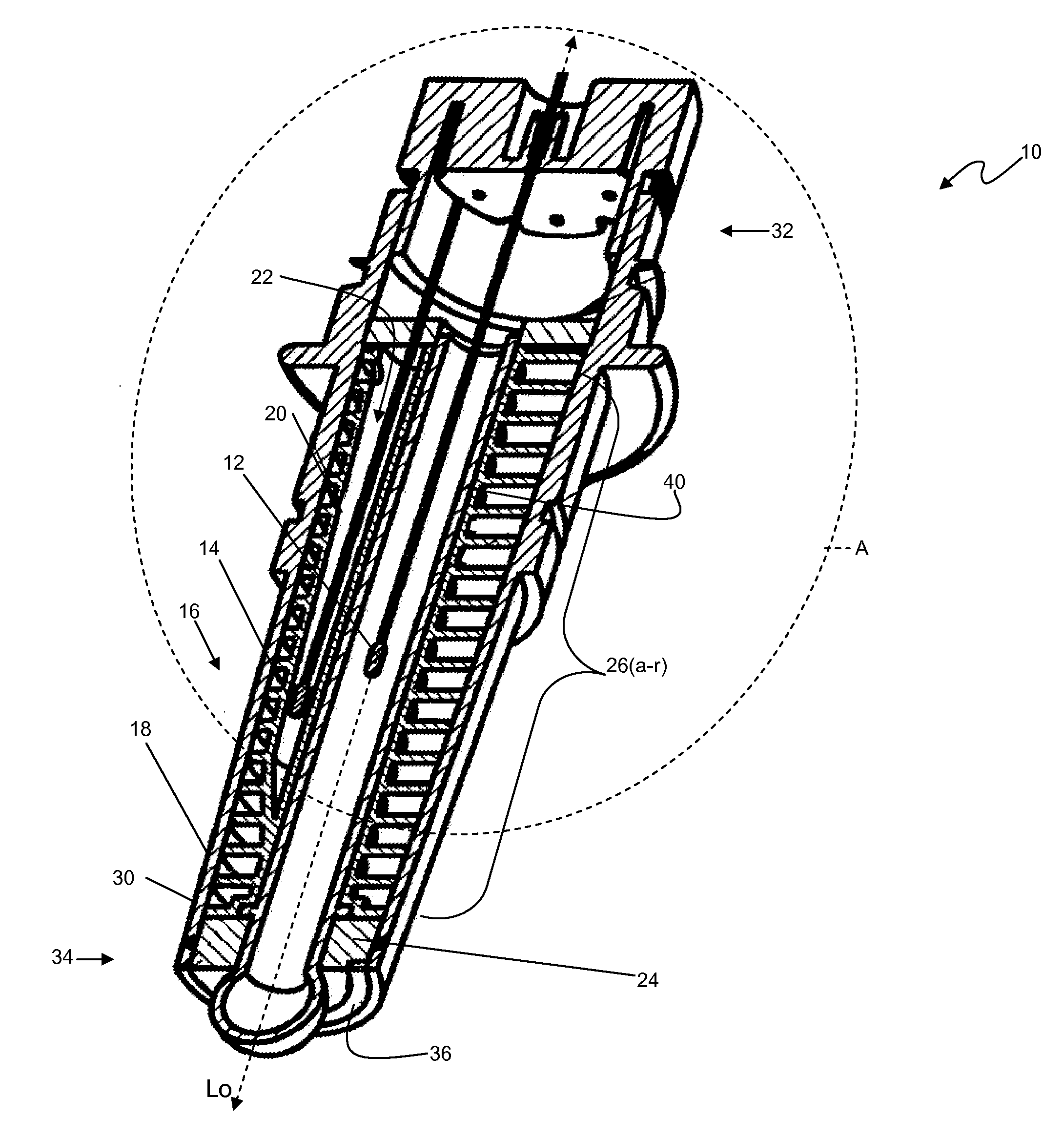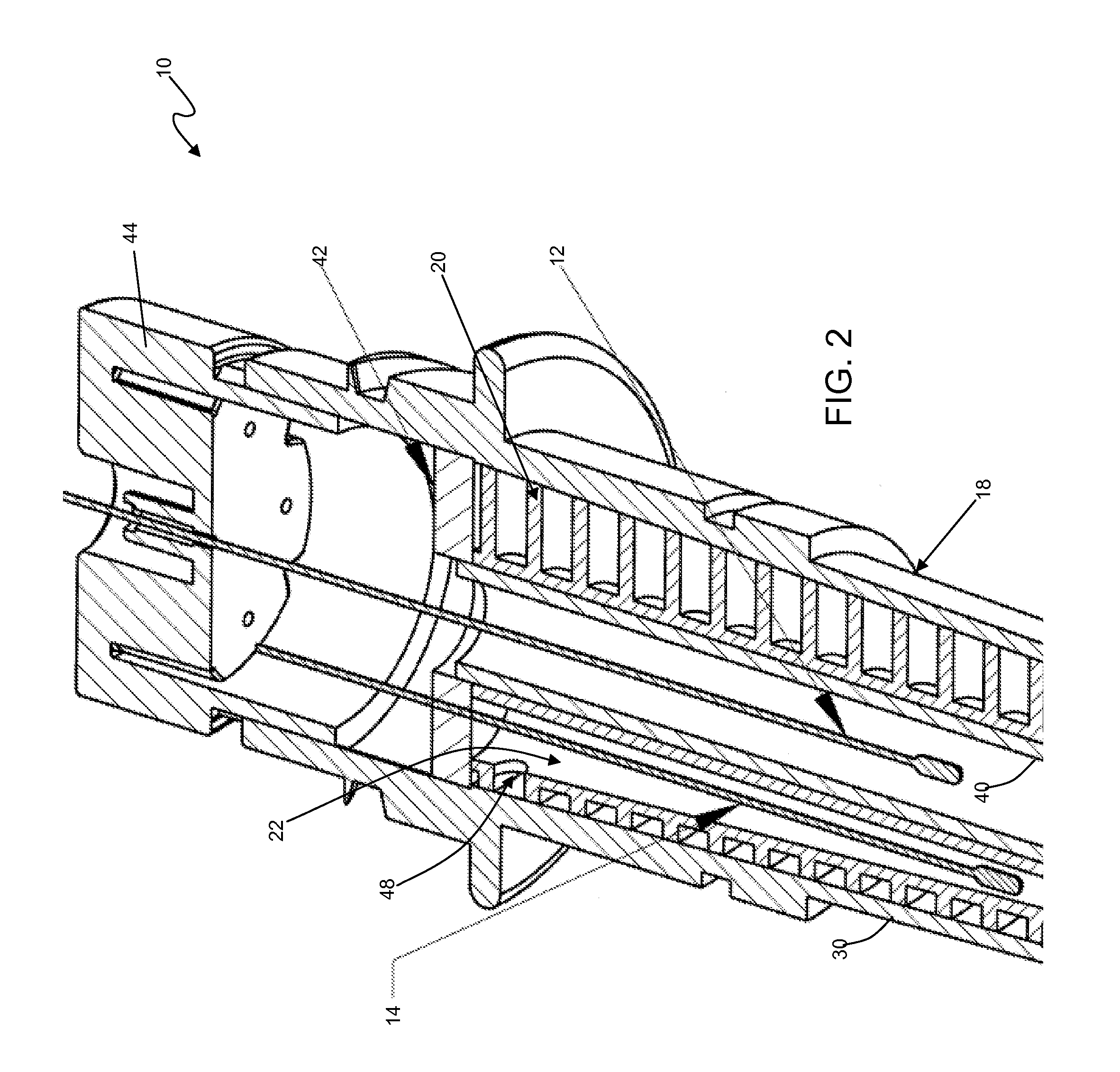Electrochemical Sensor and Method of Manufacture
a technology of electrochemical sensors and manufacturing methods, applied in the field of electrochemical sensors, can solve the problems of affecting the performance of reference electrodes,
- Summary
- Abstract
- Description
- Claims
- Application Information
AI Technical Summary
Benefits of technology
Problems solved by technology
Method used
Image
Examples
Embodiment Construction
[0025]Referring now to the drawings, and particularly to FIGS. 1 and 2, there is shown an electrochemical sensor assembly 10, for measuring parameters of a target fluid (not shown), such as ORP or specific ions, e.g., pH or sodium. The sensor assembly 10 includes a measuring electrode 12 (e.g., glass pH electrode) and a reference electrode 14 coupled to a housing 16, having an outer member 18 and an inner member 20. The reference electrode is disposed within a reference cavity 22, defined by the inner member of the housing, and is surrounded by a reference electrolyte. The sensor assembly includes a liquid junction comprising a junction plug 24 disposed at distal end of the housing. The inner member includes a plurality of cross members 26(a-r), each defining an aperture 28(a-r). The cross members and apertures aid in defining a long, tortuous flow path, or salt bridge, between the target fluid and the reference electrode, resulting in a high resistance factor for the sensor.
[0026]A...
PUM
| Property | Measurement | Unit |
|---|---|---|
| Angle | aaaaa | aaaaa |
| Flow rate | aaaaa | aaaaa |
| Electrical resistance | aaaaa | aaaaa |
Abstract
Description
Claims
Application Information
 Login to View More
Login to View More - R&D
- Intellectual Property
- Life Sciences
- Materials
- Tech Scout
- Unparalleled Data Quality
- Higher Quality Content
- 60% Fewer Hallucinations
Browse by: Latest US Patents, China's latest patents, Technical Efficacy Thesaurus, Application Domain, Technology Topic, Popular Technical Reports.
© 2025 PatSnap. All rights reserved.Legal|Privacy policy|Modern Slavery Act Transparency Statement|Sitemap|About US| Contact US: help@patsnap.com



